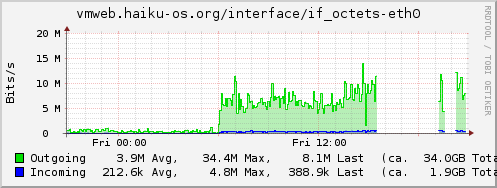You might think that I took a short vacation, but I’ve just been buried in Real Life. You might also be wondering about where lessons 6-11 went. They’ll be published later, but you’re not missing anything, as they are edits of the last several lessons from Learning to Program with Haiku with an experienced developer in mind. If you’ve worked with the previous series, there isn’t anything in 6-11 that you haven’t seen before – they’re more to make the Programming with Haiku series complete on its own.
Probably forgetting half of what took place and getting the other half backwards, below are my recollections of BeGeistert 023.
It’s been a long time coming, and they’re still not done, but I’ve committed some initial documentation for the Layout API. For the curious, you can access the documented classes here, there is also an introduction to building a GUI with the Layout API here. If you happen to find a typo, or inaccurate info, please contact me so I can fix it. Finally, note that, like the documentation, the Layout API is not yet finalized.
This morning I was welcome by a nice XKCD cartoon mentioning Haiku (as an experimental OS).
Several of us started twitting (rather, identi.ca-ing) about it, proud as we were.
Then when getting back tonight we noticed the website was unreachable.
It really seems like it brought us quite a lot of unwaranted advertising! It’s quite visible on the server stats:

I've been working on getting WPA encryption to work on Haiku. While I haven't been able to invest as much time as I hoped for before, I made a bit of progress that at least justifies a small status update. The first part of WPA related work has actually happened while I was working on the network stack for Haiku Inc., as it was not possible to inject packets into the network - while you could easily monitor all incoming packets, there was no mechanism to send packets for arbitrary protocols.
In an attempt to move on and get on to just the Haiku API, here are the final three lessons on C++. Lesson 3 introduces C++ file streams, formatting and printing using C++ streams, and lightly touches on exceptions. Lesson 4 takes a break from actual coding and spends time on a critical development tool: source control – what it is, how it is used, and why it is used. Lesson 5 ties together all of the C++ concepts covered in this series with a project.
Lesson #2 in my new series of development tutorials continues with a fast and furious course through the rest of the Standard Template Library with some of the Standard C++ library thrown in for spice. We learn about associative STL containers like map and set and examine the C++ string class.
Programming with Haiku, Lesson 2
On behalf of the Haiku Support Association (HSA), we'd like to invite you to our 23rd BeGeistert meeting on the weekend of 23./24. of October 2010. It will be held as usual in the nice conference rooms of the youth hostel in Düsseldorf, Germany.
BeGeistert is an excellent opportunity to mingle with and learn from other users and developers from all over Europe (and beyond: this year we're happy to be joined by Rene Gollent, flying over from the US, and Christof Lutteroth and Clemens Zeidler from New Zealand!
Google Summer of Code 2010 is now over. It was a wonderful experience, and I learned a lot about Haiku’s internals, about file system development, and about myself. I successfully completed my proposal to a point an initial version of the Ext3 file system is available to the Haiku kernel for testing. There are some things that remain to be completed, like sparse files, proper revoke support, multi-transaction truncation and some more thorough testing, but overall, it was successful.
This weekend was my second year at the Ohio LinuxFest at the Greater Columbus Convention Center in downtown Columbus, OH. I arrived at the convention center at about 7:15am. Unlike last year, there was hardly anyone there outside of the OLF staff doing checkin and a few vendors. Joe Prostko was already there, having stayed at a hotel nearby the night before. It was good to see him again. We started talked for a bit and then started getting the table set up.





